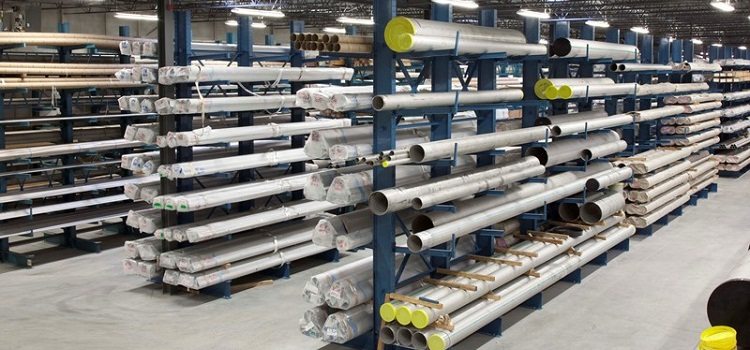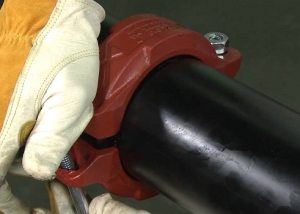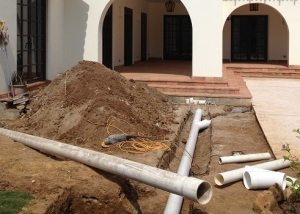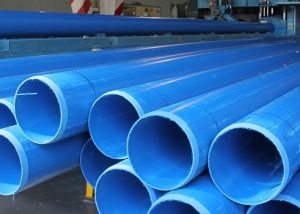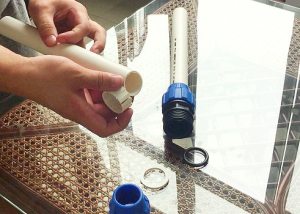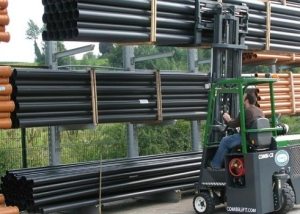Plastic pipes in water supply and sewage systems today will not surprise anyone. They confidently push their metal counterparts out of this niche in the plumbing market. Plastic pipes, including PVC products, are resistant to chemically active substances, are not subject to corrosion and are more durable. Modern industry produces several types of similar pipe products. Below, their characteristics and main differences will be considered.
Content
Types of PVC sewer pipes and their features
The arrangement of sewage systems is based on the following types of PVC products:
- gray pipes. Designed for laying an internal house drainage network. The main diameters of gray PVC pipes are 50 and 110 millimeters. Such dimensions provide the opportunity to lay plastic sewage lines from any household and sanitary appliances. A wide range fittings allows you to create a trunk of various configurations. This factor is important when working indoors. The strength characteristics of gray PVC pipe allow it to cope with the usual loads that occur in internal networks. But due to insufficient rigidity, such an element of engineering communication lay in the ground not allowed;
- orange pipes. External networks - this is the main scope of such products.
Helpful information! Orange sewer pipes should not be used in house networks, as they are less resistant to high temperatures.
The standard diameters of the orange plastic PVC pipes are 110 and 150 millimeters, which makes it possible to organize the discharge of sewage from any buildings and premises. Their main advantage - increased strength - is ensured by a combination of two factors. These are the unique physical properties of the material itself and the increased wall thickness.
In practice, orange smooth-walled products of the following stiffness classes are mainly used to create external highways:
- SN 4: Withstand the intermittent loads produced by passing light vehicles;
- SN 8: Characterized by increased strength. The laying of products of this class is allowed under highways with heavy vehicle traffic;
- corrugated pipes. Such plastic products have an even higher mechanical strength. The outer surface of the corrugation with a variable cross section is larger than that of a smooth pipe element of the same diameter. Due to this, redistribution of the pressure created by the soil occurs. That is why corrugated pipes even large sizes withstand significant loads.
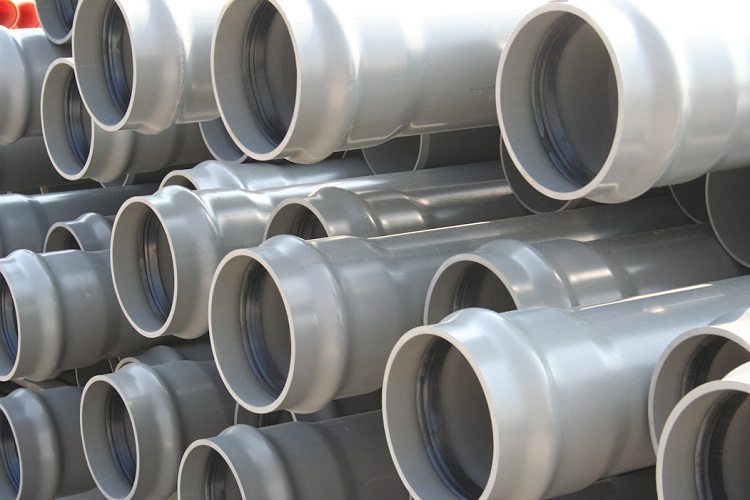
Smooth gray pipes are mainly designed for domestic sewage, so they are available in small diameters on the market
The industry produces two types of such products:
- single layer. The inner and outer surfaces are ribbed. The price of a single-layer corrugated pipe is relatively small. However, the efficiency of the drainage of wastewater from them is significantly deteriorating;
- two-layer. The inner surface is smooth and the outer ribbed. This design provides a level of flow resistance not greater than in traditional smooth-walled sewer pipelines with similar dimensions.
Typical corrugated PVC pipe diameters range from:
- outer 110 ≤ Dnar ≤ 1135 mm;
- inner 93 ≤ Dvn ≤1000 mm.
Corrugated gray and orange products are widely used in the field of filtering fields. This material significantly increases the life of the drainage system and its durability. If we talk about drainage lines, then their arrangement without PVC corrugated products is simply impossible.
In addition, corrugated plastic pipe products are used when laying electrical communications and performs the function of protecting them from mechanical damage. But there is still such a factor as the possibility of a fire during a short circuit. And from this point of view, corrugated PVC pipes are a great solution. It is not just about the fact that they ignite at a temperature of 400 ° C. Corrugated PVC products also self-extinguish.
Benefits of PVC Pipe Products
The advantages of a plastic polyvinyl chloride pipe abound. Of these, it is worth highlighting:
- high strength;
- the absence of the phenomenon of overgrowing by solid deposits of the inner surface. Moreover! PVC sewer pipe capable of self-cleaning. That is, the homeowner does not have to regularly clean the system;
- wear resistance. The passage of drains containing abrasive inclusions does not cause damage to the internal surface of the pipeline;
- environmental safety;
- affordable cost.
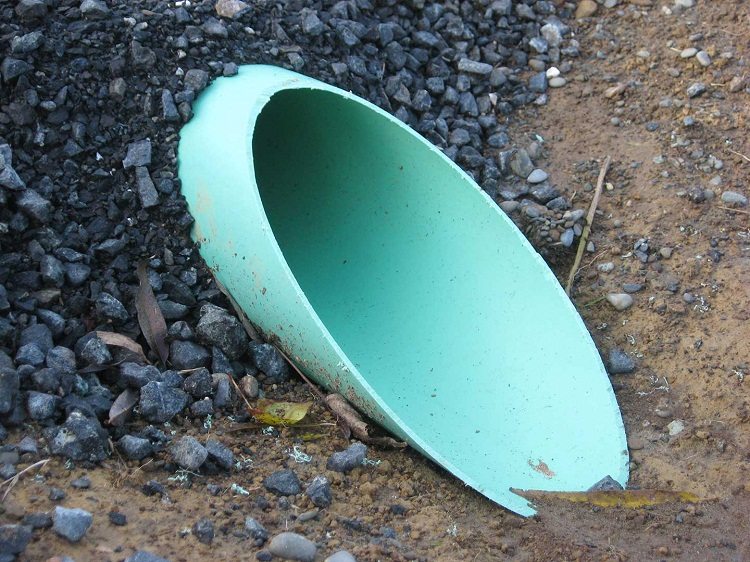
PVC pipes withstand heavy loads without loss of performance, they are suitable for laying in the ground
This list goes on and on. However, the above advantages are enough to give preference when creating a PVC sewer pipeline to products.
Helpful advice! But we should not forget about the minus of products from polyvinyl chloride: the maximum allowable temperature of the working medium transported over a long period of time is + 40 ° C. Declared by many manufacturers + 60 ° C are allowed for short-term movement of a liquid with such a temperature. Long contact with hot water leads to a sharp reduction in the life of the PVC pipeline.
How to purchase PVC products for sewage
A wide range of PVC products complicates their selection. Before buying, pay attention to the following physical and technical characteristics of such pipes.
- strength. The low density of the material leads to sagging of the pipeline in extended sections. Particularly noticeable increase in the size of the PVC pipe when it is filled. Therefore, when installing such sections, you will have to use additional brackets;
- workspace. The presence of aggressive liquids in the created sewage system is not ruled out. This is important, for example, for small industries. For the pipeline to serve for a long time under such operating conditions, correlate the characteristics of its plastic components with the estimated composition of the wastewater;
- section length. As you know, the linear dimensions of PVC pipes are different. Therefore, when designing a sewer system, it is necessary to measure all distances. For the formation of straight sections, it is better to use whole pipe products without any additional connections;
- pipe diameters. Different sections of the drainage system are equipped with pipes with different cross sections. To organize a drain from the bathroom, you can use products with diameters of 50 millimeters. And the system should be connected to the central riser with a pipe with a cross section of 100 mm or more.
A table of diameters of PVC pipes and the linear dimensions of the sockets is presented below.
Table 1
| Bell inner diameter (minimum), mm | Pipe diameter | Installation length | Bell length | ||
| Elongated socket, mm | Okay. socket, mm | Elongated socket, mm | Okay. socket, mm | ||
| 631,9 | 630+1,1 | 242 | 228 | 361 | 228 |
| 501,5 | 500+0,9 | 212 | 200 | 323 | 200 |
| 401,2 | 400+0,7 | 188 | 178 | 291 | 178 |
| 316 | 315+0,6 | 171 | 158 | 272 | 158 |
| 250,8 | 250+0,5 | 167 | 125 | 265 | 125 |
| 200,6 | 200+0,5 | 133 | 90 | 226 | 90 |
| 160,5 | 160+0,4 | 123 | 74 | 214 | 74 |
| 110,4 | 110+0,3 | 113 | 58 | 201 | 58 |
When purchasing PVC pipe products, require a quality certificate from a retailer. So you are convinced that the declared technical characteristics correspond to real values.
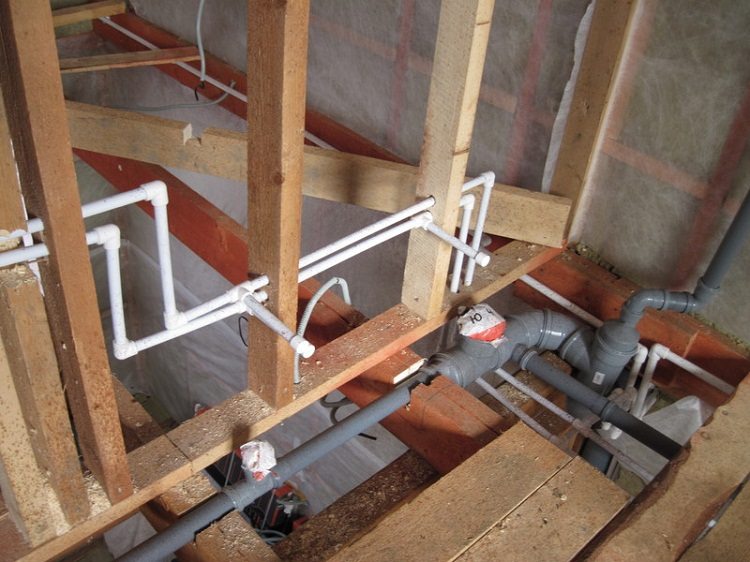
To install the same system, pipes of different sizes are required - the larger the volume of drains, the wider the pipe should be
PVC pipes for water supply. Advantages and disadvantages
These products began to be produced in the second half in the second half of the XX century in Germany. The main requirement for polyvinyl chloride pipes is their ability to withstand a fairly high level of pressure in the system. That is why, to create a water supply system, this type of plastic pipe is used as NPVH. The letter "H" is an abbreviation of the word "pressure". As raw materials for their manufacture, unplasticized polyvinyl chloride is used, which is highly resistant to various chemical influences. The final product is a rigid gray pipe with sockets.
The main advantages include:
- low level of thermal conductivity. Compared to metal, the value of this indicator for polyvinyl chloride is much less;
- ease of installation. It is provided not only due to the low weight of the PVC pipe. Products for plumbing from unplasticized polyvinyl chloride are easily cut and bent. Due to this, resizing to the desired configuration of the pipeline is carried out without any problems;
- resistance to corrosion and decay;
- low exposure to ignition. The ignition temperature is + 500 ° C;
- acceptable for the budget of most of our compatriots cost.
Helpful information! Among other things, low thermal conductivity prevents the water flowing through the plastic PVC-U from cooling.
Weaknesses:
- at temperatures below -15˚С operation is not allowed. Even small-sized sections of the NPVH water supply system that go outside from a private house must be insulated;
- the upper temperature limit is limited to plus 60 ° C;
- the presence of mechanical damage reduces resistance to shock loads.
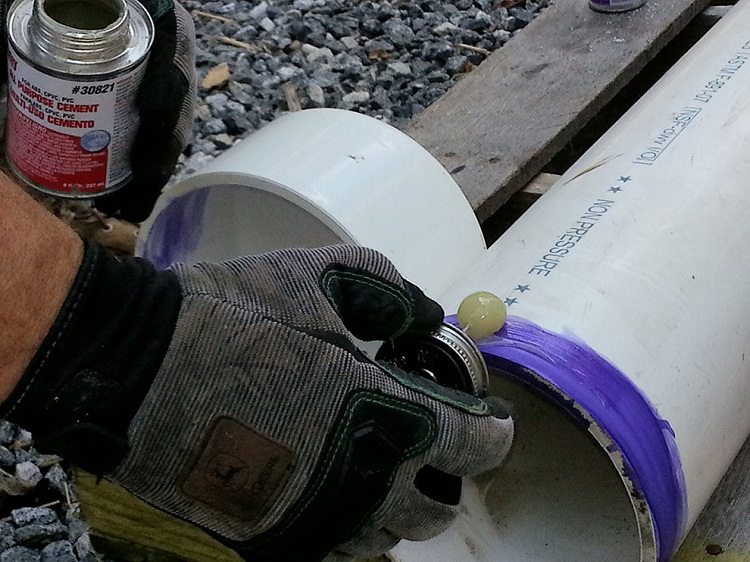
PVC pipes of any size can be connected with glue, this greatly simplifies installation and provides high strength and tightness of the system
Technical Specifications of PVC Water Pipes
In the table below you will find selective information on the diameters and sizes of PVC pipes for water supply.
table 2
| Outer diameter (nominal) Dn. | Minimum wall thickness (nominal) | ||||
| Series, S | |||||
| S5 | S8 | S12.5 | S10 | S16 | |
| SDR11 | SDR17 | SDR26 | SDR21 | SDR33 | |
| Working pressure PN (nominal), bar | |||||
| PN20 | PN12.5 | PN8 | PN10 | PN6 | |
| 90 | 8,2 | 5,4 | 3,5 | 4,3 | 2,8 |
| 75 | 6,8 | 4,5 | 2,9 | 3,6 | 2,3 |
| 63 | 5,8 | 3,8 | 2,5 | 3,0 | 2,0 |
| 50 | 4,6 | 3,0 | 2,0 | 2,4 | 1,6 |
| 40 | 3,7 | 2,4 | 1,6 | 1,9 | 1,5 |
| 32 | 2,9 | 1,9 | 1,5 | 1,6 | ——- |
| 25 | 2,3 | 1,5 | ——- | ——- | ——- |
| 20 | 1,9 | ——- | ——- | ——- | ——- |
| 16 | 1,5 | ——- | ——- | ——- | ——- |
| 12 | 1,5 | ——- | ——- | ——- | ——- |
When making a choice, one should not forget about the influence of the size of plastic pipes for water supply on the communication capacity and on the fluid pressure. Having preferred a small-diameter product, you run the risk of breaking through such a site. And vice versa, too large a cross-section of water supply elements will cause a small head of fluid supply.
As you know, the weight of the pipe is a derivative of the diameter and wall thickness. And the value of this parameter for a product made of polyvinyl chloride is several times smaller than that of the same size, but metal. At the same time, modern technologies for the production of polymer pipe products are aimed at further reducing material consumption without compromising strength characteristics. As a result, new products for water supply with less weight per linear meter appear. From this point of view, the development of multilayer plastic tubular products is considered a milestone. The mass of such a structured structure is 2.5-3 times less than the weight of a monolithic PVC component of the pipeline.Moreover, this trend is observed not only with respect to polyvinyl chloride pipe products.
Good to know! The mass of such engineering communication elements from PE100 is 40% less than from PE63.
Numerical values of the weight of one linear meter of PVC pipes for water supply, depending on their diameters and ring stiffness class, you will learn by studying the third table.
Table 3
| Pipe diameter mm | SN8 | SN4 |
| Weight, kg | Weight, kg | |
| 500 | 24,67 | 19,6 |
| 400 | 15,32 | 12,84 |
| 315 | 9,54 | 7,91 |
| 250 | 5,97 | 5,01 |
| 200 | 3,39 | 2,95 |
| 160 | 2,27 | 1,83 |
| 110 | 1,04 | ——- |
In conclusion, a few words about the storage of this product. Do not allow direct sunlight to fall on it. It is also impossible to move PVC pipes by dragging, they can only be moved. In addition, there are often cases of damage during transportation. Therefore, when buying it will be useful to inspect the product.
